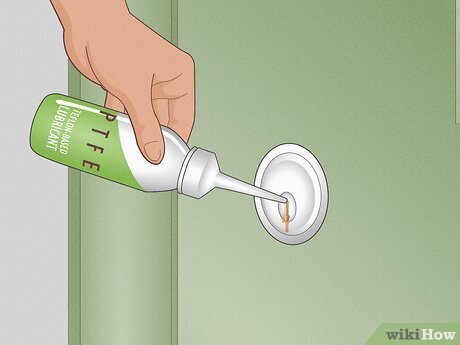
Now, you might be wondering why this matters or how to go about it. Well, imagine trying to open a stuck door after a long day. Frustrating, right? That’s why understanding how to lubricate a latch bolt can save you hassle and extend the life of your door hardware. Let’s dive into some best practices for applying lubricant to the latch bolt, making sure it serves you well for years to come.
Understanding the Latch Bolt
Before we get to the lubricant, let’s first understand what a latch bolt is. A latch bolt is the part of a lock that extends into the door frame when you close it. It keeps the door securely shut. When the door handle is turned or pulled, the latch bolt retracts, allowing you to open the door. If you’ve ever had a sticky door that won’t open easily, it’s usually because the latch bolt is not functioning smoothly.
Latch bolts can come in different types, like deadbolts or spring-loaded ones, and brands like Schlage or Kwikset. Each may require specific lubrication methods, but the basic idea remains the same: keep it clean and well-lubricated. This helps prevent rust and ensures the latch operates smoothly without jamming.
Choosing the Right Lubricant
Honestly, the type of lubricant you choose for your latch bolt matters. Not all lubricants are created equal! Here are some ideal options:
- Graphite Powder: This is a popular choice because it won’t attract dust or dirt. It’s perfect for a latch bolt that’s prone to getting sticky.
- SILICONE Spray: This is another excellent option. It provides a good layer of protection and can penetrate hard-to-reach areas.
- Oil-Based Lubricants: While they may be tempting, be cautious. Some oils can attract dirt and grime, causing more problems down the line.
When selecting a lubricant, check the manufacturer’s recommendations. They often know what works best for their products. Plus, using the right lubricant can save you time and effort in the long run.
How to Apply Lubricant to the Latch Bolt
Now let’s get into the nitty-gritty of applying lubricant to the latch bolt. Here’s a simple step-by-step guide to make sure you get it right:
1. Gather Your Materials: You’ll need your chosen lubricant, a clean cloth, and possibly a small brush. This helps get into those tricky spots.
2. Clean the Latch Bolt: Before applying any lubricant, make sure to clean the surface of the latch bolt. Wipe it down with a clean cloth to remove dust or grime. This step is crucial—it’s like starting with a clean slate.
3. Apply the Lubricant: Use the lubricant according to its instructions. For spray lubricants, apply a light coat while turning the latch several times. For graphite powder, simply sprinkle a small amount onto the latch.
4. Work it In: Once you apply the lubricant, operate the latch several times to ensure it spreads evenly. This action is like working a little oil into joints; it helps everything run smoothly.
5. Wipe Off Excess: After a few uses, wipe off any excess lubricant. This prevents dirt from accumulating, which can lead to future sticking or jamming.
Frequency of Lubrication
You might be wondering how often to apply lubricant to your latch bolt. The general rule of thumb is to do it every six months or so. However, environmental factors can influence this. If you live in a humid area, you may need to lubricate more frequently; moisture can lead to rust.
Pay attention to how your latch feels. If it starts to feel stiff or makes noises when operating, it’s definitely time for a refresh. Your latch bolt should glide smoothly, just like the door it secures.
Common Problems and Troubleshooting
Even with the best care, latch bolts can sometimes face issues. Here are a few common problems and how to troubleshoot them:
– Sticking Mechanism: If you notice your latch bolt is hard to move, it may need lubrication. Follow the steps mentioned earlier, ensuring it’s clean and well-oiled.
– Rust Formation: If rust has developed, clean it off with a rust remover before applying lubricant. Failing to do this might trap more moisture.
– Incompatible Lubricants: If you’ve previously used oil-based lubricants and switched to dry ones, the residue can cause sticking. Make sure to thoroughly clean the bolt before a switch.
FAQs About Lube and Latch Bolts
While this article covers a lot, you might still have questions. Don’t hesitate to ask professionals when in doubt. A locksmith can provide tailored advice for more complex issues.
Taking care of your latch bolt doesn’t have to be complicated, but a little knowledge goes a long way. By choosing the right lubricant, applying it correctly, and paying attention to how your latch feels, you can ensure it functions smoothly. Like any good relationship, your latch bolt needs regular maintenance to thrive. So the next time you hear a squeak or notice your door isn’t closing smoothly, remember these tips. With a bit of care, you’ll keep that latch bolt operating like new for years to come.